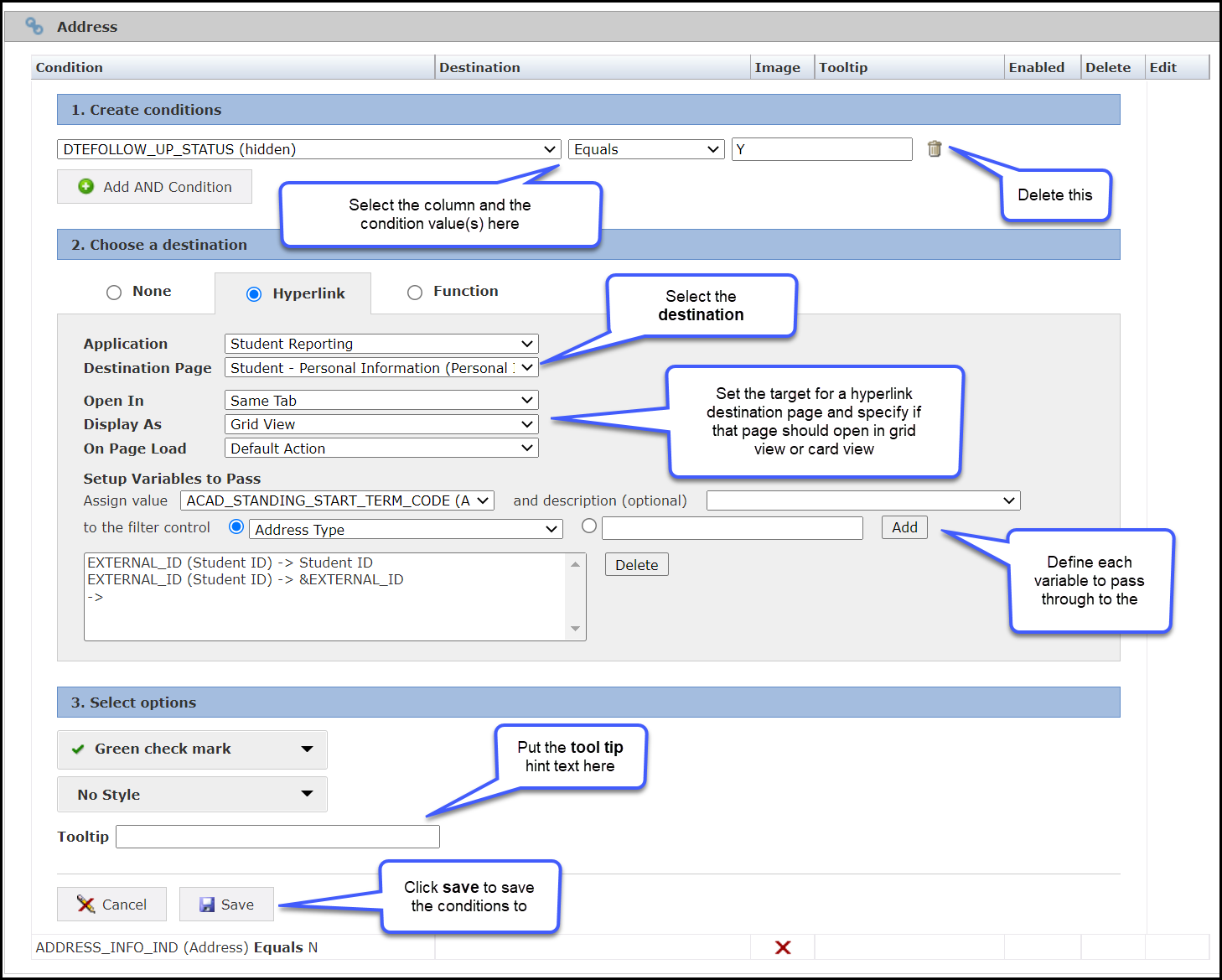Adding Hyperlinks to a Custom Reporting Page
Adding Hyper links into the report allows you to ensure that the data that you see is fully supported with more details. Hyperlinks give you the ability to add drill downs to detailed transaction reports from information on your summary reports that you have created.
Before you add hyperlinks to your summary reports, you need to first create the more detailed transaction reports that will be the hyperlink target. Once these are created, you can open the custom report in the report viewer and add the hyperlinks to your summary reports using the Hyperlink tab in the +More section of your report view.
You also have the ability to create custom Visualizations on your report data using the same Hyperlink Tab. Click here for a detailed overview of the Visualization Process.
You can also add a Communication Control and/or SMS Control to custom reporting pages. Click here for a detailed overview of this process.
To Add Hyperlinks to a Custom Report
Open your custom report in the Report View.
Select the + More tab, then the Hyperlinks option.

Click on Add Hyperlink
Select the column that you want the hyperlink on from the drop down list.

Specify the conditions that you want to show the hyperlink. in the example below, we have made a condition that the field is not blank.

Specify the destination, or what you want to have happen when the condition is met. In this case, you want to specify a hyperlink, and specify the destination, which is the destination reporting page.
You now need to specify the parameters that you need to pass to the report. These parameters will be the values that are passed into the drop down lists for the destination report. There should be a parameter passed for each of the drop down lists in the destination report. In the example shown below, there are four parameters, Acct, Fiscal Year, Fund and Orgn that are being passed.
If you want to add a hint to the link for the viewer to know what they need to do, add the hint text to Tool tip.
Save the report
You can add as many hyperlink columns as you need by clicking on the Add New Column and repeating this process.
Go back to Report Results and execute the report and you will see the new hyper links added.
If you are working between environments and wish to move a custom report from one instance to another, you can use the Export or Import functionality to do this. This is an all-or-nothing process that will export every hyperlink from a given reporting page and only import successfully if no hyperlinks exist in the destination page. This is especially useful when copying a new custom report from your Dev or Test environment into Production. The buttons are located directly on the Hyperlinks Tab.

Learn more about how to migrate custom reports between environments.
